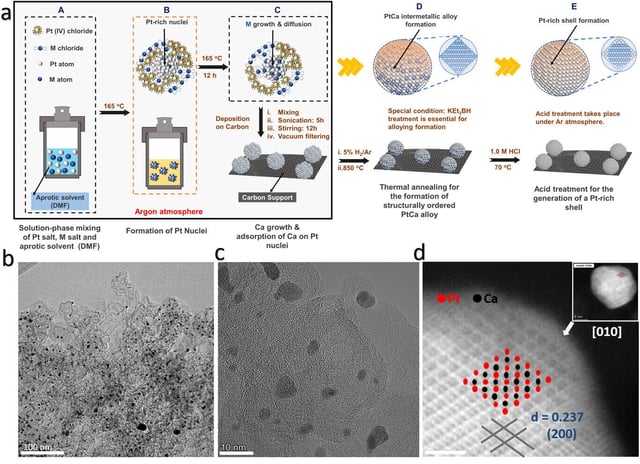Overview
- The catalyst delivers over a 20% increase in mass activity and durability compared to U.S. Department of Energy 2025 targets.
- A liquid-phase synthesis produces a calcium-rich core wrapped in a platinum shell while reducing platinum usage by up to 40%.
- In fuel cell testing the nanoparticle maintained more than 90% of its performance after 30,000 stress cycles, addressing long-term stability concerns.
- Publication in Small and support from Korea’s National Research Foundation were bolstered by theoretical insights from the University of Duisburg-Essen on platinum-calcium interactions.
- Researchers are now advancing production scaling, securing calcium supply chains, and integrating the catalyst into commercial fuel cell stacks.
